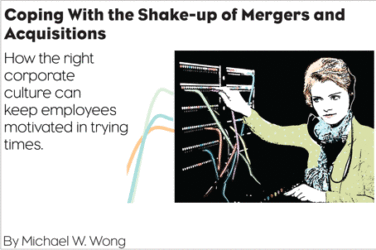Jeff Trotter has been hailed as a pioneer, innovator and entrepreneur and is a leader in the design and implementation of clinical studies that generate “real-world” evidence. Jeff spoke with PM360 about the importance of collaboration between all healthcare stakeholders, creating “true partnerships,” when and how pharma marketers should become involved and what it all means in the pursuit of better patient outcomes, for which all have that responsibility.
PM360: Call you tell us about the motivation and insights that brought you to this point in your career?
Jeff Trotter: My career has been characterized by pushing boundaries and challenging comfort zones, although not necessarily intentionally. But after walking the tightrope for so long between the traditional “land masses” in the pharma industry—Clinical and Commercial—it gets to be a habit. These groups do not work together all that frequently, and so Continuum is all about addressing the disconnect, building bridges and balancing science and strategy to ultimately improve outcomes by identifying and communicating “what works best” in the real world. If we can document the clinical, economic and humanistic value of products in the real world, so many different stakeholders (including patients) stand to benefit. This can only be accomplished when “scientists” and “marketers” work together.
What does this means for pharma marketers, for patient recruitment and the healthcare industry?
As an industry, we spend tremendous amounts of time and money to prove a product actually works, but under conditions that rarely can be replicated in actual practice. Of course, these controlled experiments need to be undertaken as they are and should be the basis for regulatory approval, but understanding how a product performs in actual conditions is critical to patients, providers and payers—because the real world is where care is actually delivered.
Increasingly, we are advocating for our clients to undertake real-world studies alongside controlled clinical trials by using the patient recruitment “funnel” as a mechanism for fueling both. Ultimately, patient engagement is central to both clinical trial recruitment and, down the line, to product commercialization. Again, it requires scientists and marketers to better appreciate the opportunities to achieve business value every step of the way in clinical and commercial development—and without compromising scientific advancement and the contribution to improved outcomes.
Your goal is to facilitate synergies to accelerate clinical and commercial development of “prioritized” products within the timeframe surrounding product approval and launch. What are those synergies?
Most of our clients are looking for opportunities to improve the cost efficiency of both clinical and commercial development processes and again, without compromising their responsibilities to science and patient care. The hand-off from Clinical to Commercial should be more of a transition and less of an absolute shift in responsibilities. Hence, clinical development needs to be undertaken within a strategic and commercial context, and commercial development must be undertaken within an appropriate clinical context. This is often encouraged within “big pharma” today, but outdated organizational structures often discourage people from working together.
For example, the concept of leveraging individuals that don’t qualify for a particular clinical trial to participate in real-world research is one that everyone agrees with, but few have the ability to act on since it requires seeing the big picture and the ability to tap into someone else’s budget to benefit the company as a whole. If companies were able to work backwards from a particular strategic goal, it might be easier to identify the sources of information, and to structure the budgetary process to be more aligned with collaborative actions.
How are companies and marketers currently faring in this regard?
I’m a firm believer that technology—mobile health in particular—can be an important and natural mechanism for patient engagement and for facilitating clinical research, particularly real-world research. As such, it becomes a natural uniter, although data purists may have some legitimate concerns.
I’m optimistic that most company CEOs, and it certainly must be a top-down ethos, are extolling the virtues of “beyond the pill”—the idea that pharma companies are selling outcomes and not just drugs. This requires innovative, collaborative thinking and puts the traditional barriers, such as the oft-crippling fear of offending regulators, in the appropriate perspective. That said, a lot of traditional thinking in pharma is reinforced by traditional organizational structure, training, comfort zones, etc., that keep well-intentioned people from seeing the bigger picture.
As for solutions, in my view the most successful organizations empower multi-disciplinary project teams to collaborate and reinforce the value of their work product through organizational advancement, rewards and exposure throughout the company.
What changes will we see in the process of patient recruitment and commercialization of drugs and devices to improve patient outcomes?
I think patient recruitment needs to be an on-going proactive process of engagement—not the more traditional “one-off” project associated with a specific clinical trial. It’s far easier to recruit an individual for a clinical trial via a pre-existing relationship. The key is in establishing and maintaining the level of engagement, and leveraging the pre-existing “community” relationship for a variety of purposes. This is most definitely an area that will make an impact, and one that will provide great insights along the way to improve the efficiency of both clinical and commercial development.
And finally, what gets you up in the morning?
What gets me up in the morning is knowing that each day comes with an opportunity to provide some enlightenment to a client that will result in them seeing things a bit differently, leading toward collaboration and ultimately toward better patient outcomes.






